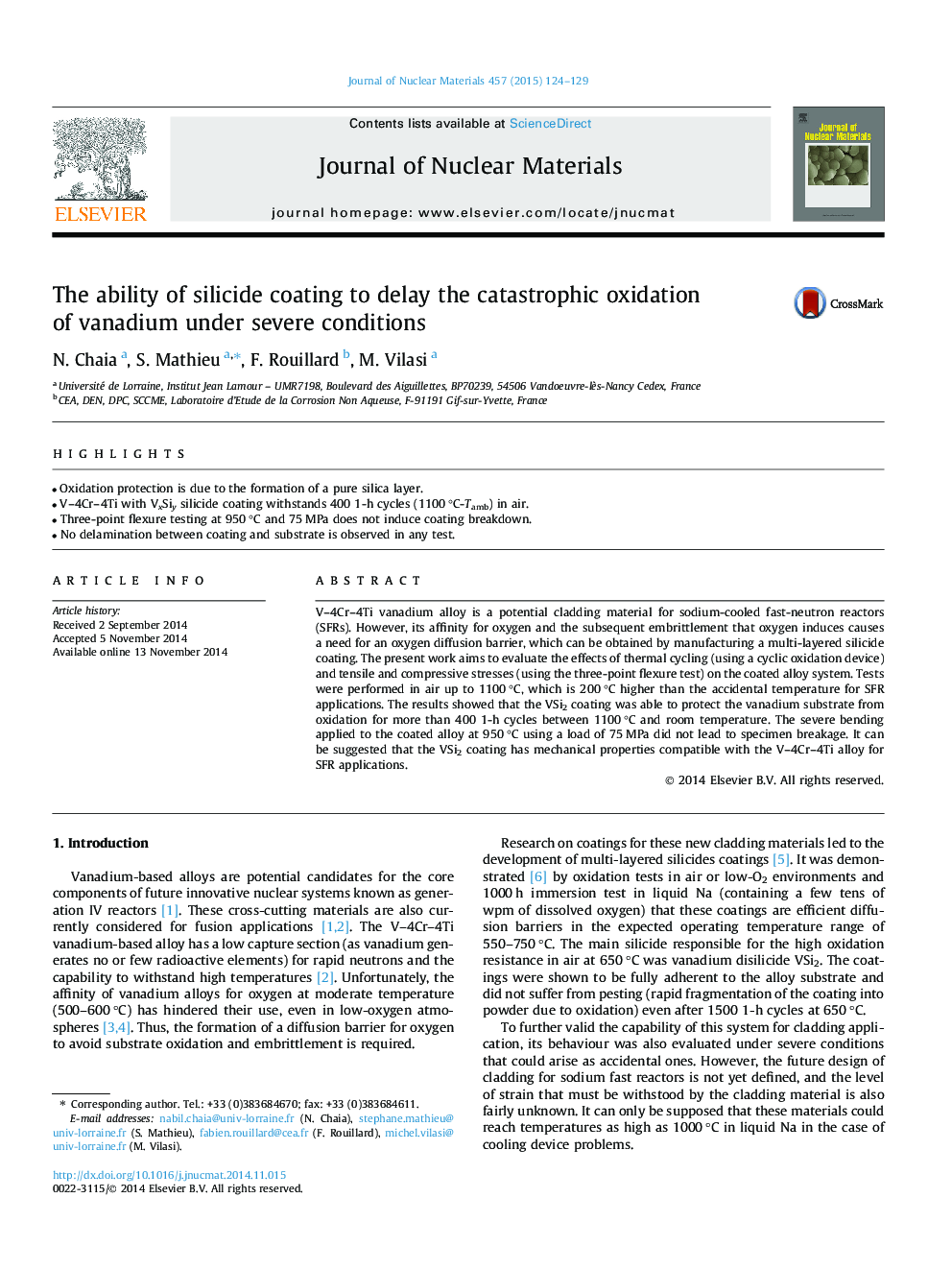| Article ID | Journal | Published Year | Pages | File Type |
|---|---|---|---|---|
| 1565034 | Journal of Nuclear Materials | 2015 | 6 Pages |
•Oxidation protection is due to the formation of a pure silica layer.•V–4Cr–4Ti with VxSiy silicide coating withstands 400 1-h cycles (1100 °C-Tamb) in air.•Three-point flexure testing at 950 °C and 75 MPa does not induce coating breakdown.•No delamination between coating and substrate is observed in any test.
V–4Cr–4Ti vanadium alloy is a potential cladding material for sodium-cooled fast-neutron reactors (SFRs). However, its affinity for oxygen and the subsequent embrittlement that oxygen induces causes a need for an oxygen diffusion barrier, which can be obtained by manufacturing a multi-layered silicide coating. The present work aims to evaluate the effects of thermal cycling (using a cyclic oxidation device) and tensile and compressive stresses (using the three-point flexure test) on the coated alloy system. Tests were performed in air up to 1100 °C, which is 200 °C higher than the accidental temperature for SFR applications. The results showed that the VSi2 coating was able to protect the vanadium substrate from oxidation for more than 400 1-h cycles between 1100 °C and room temperature. The severe bending applied to the coated alloy at 950 °C using a load of 75 MPa did not lead to specimen breakage. It can be suggested that the VSi2 coating has mechanical properties compatible with the V–4Cr–4Ti alloy for SFR applications.
